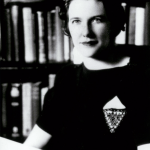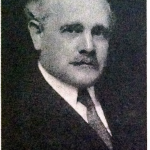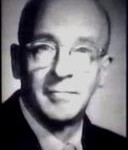Leadership in 1938

Evelyn Millis Duvall
¶ 1
Leave a comment on paragraph 1 0
The founding of NCFR in 1938 reflected the climate of the preceding years. Nineteenth- and 20th-century social and cultural upheavals (e.g., changing social institutions, changing women’s roles, and changing divorce and desertion rates) directed attention to the quality of family life in the United States. During the 1880s, family life educators organized parent groups. In 1908, the American Home Economics Association (AHEA) began initial work in behalf of family welfare. The sex education boom of World War I and the postwar progressive education movement both served as early forces in the formation of the family discipline. During the early decades of the 20th century, sociologists became active in the family field. This interest precipitated some of the early family literature used in academic settings. In addition, early leaders in the study of the family were offering courses on college and university campuses. Against this background of professional interest, the founders of NCFR launched the organization on behalf of American families.
(from: NCFR History 1938–75, Joanne Selinske, Purdue University 1976 Master’s Thesis; Advisors: Richard Kerkhoff & Charles Figley)
¶ 2 Leave a comment on paragraph 2 0 Although Paul Sayre‘s major academic field was international and comparative law at the University of Iowa Law School, he was very concerned about the status of marriage and family life in the United States and beyond. He felt strongly that academic research and discourse among all disciplines could be instrumental in improving the lives of all families.
¶ 3 Leave a comment on paragraph 3 0 Thus, in March 1938 he contacted Ernest Burgess, a sociology professor at the University of Chicago, with his idea to found a “National Conference on Family Relations.” Dr. Burgess had just returned from the impressive New York State Conference on Marriage and the Family, chaired by Rabbi Sidney E. Goldstein of the Central Conference of American Rabbis, who was also interested in the interdisciplinary study of family relations.
¶ 4 Leave a comment on paragraph 4 0 In a series of letters exchanged by these three men (see originals in the Archives), April 21, 1938, was the date chosen for the first organizational meeting of NCFR. (Its first name was National Conference on Family Relations.) It was held in Chicago, IL. In attendance were Dr. Ernest Burgess, Evelyn Millis Duvall, Thomas Eliot, Jesse Jacobs, Hazel Kirk, Eva Lawton, Rabbi Louis Mann, Ethel McDowell, William F. Ogburn, and Lydia Roberts. [taken from original 1938 letters]
¶ 5 Leave a comment on paragraph 5 0 These early leaders envisioned an interprofessional forum to provide opportunities for individuals, organized groups, and agencies interested in family life to plan and act together on concerns relevant to all forms of marriage and family relationships, establish professional standards, promote and coordinate educational and counseling efforts, and encourage research. (Two additional objectives were added in 1972, namely, “to disseminate information, and to further social action.”)
¶ 6 Leave a comment on paragraph 6 0 To achieve its purposes, the committee selected annual meetings to present research on marriage and the family, discuss problems bearing on family welfare, review work in the area of family life education, and consider action programs. There was to be only one annual national meeting, but all states or regions were to be supported and encouraged to sponsor their own annual meetings and set up state conferences in the interim between the national meeting. These groups were considered the “action arm” of the national organization.
¶ 7 Leave a comment on paragraph 7 0 From the beginning, a printed journal was planned to disseminate the latest research and news of the organization. This journal was called Living. Paul Sayre was the first editor, and it was produced at the University of Iowa. The criteria to become a member of NCFR were payment of a membership fee of $2.00 and a sincere interest in the family. In return, a member received a subscription to Living and an invitation to attend the national, regional, and state conferences.
¶ 8 Leave a comment on paragraph 8 0 The following is an excerpt from Sayre’s Presidential Address:
¶ 9 Leave a comment on paragraph 9 0 The world is divided into two very distinct classes of people: men and women. Neither can exist without the other and practically speaking significant accomplishment by either alone is impossible. Is it not good sense therefore for us to be concerned about how they live together and whether this common life promotes the accomplishment and happiness of each?
Read the NCFR founders’ original correspondence:
- ¶ 10 Leave a comment on paragraph 10 0
- NCFR Founding Letters – August through October 1938
- NCFR Founding Letters – November through December 1938
- NCFR Founding Letters – January through February 1939
- NCFR Founding Letters – March 1939
- NCFR Founding Letters – April through May 1939
- NCFR Founding Letters – June through September 1939
Gallery
- Evelyn Millis Duvall
- Sidney Goldstein
- Paul Sayre
- Ernest Burgess






Comments
0 Comments on the whole Page
Login to leave a comment on the whole Page
0 Comments on paragraph 1
Login to leave a comment on paragraph 1
0 Comments on paragraph 2
Login to leave a comment on paragraph 2
0 Comments on paragraph 3
Login to leave a comment on paragraph 3
0 Comments on paragraph 4
Login to leave a comment on paragraph 4
0 Comments on paragraph 5
Login to leave a comment on paragraph 5
0 Comments on paragraph 6
Login to leave a comment on paragraph 6
0 Comments on paragraph 7
Login to leave a comment on paragraph 7
0 Comments on paragraph 8
Login to leave a comment on paragraph 8
0 Comments on paragraph 9
Login to leave a comment on paragraph 9
0 Comments on paragraph 10
Login to leave a comment on paragraph 10
0 Comments on paragraph 11
Login to leave a comment on paragraph 11